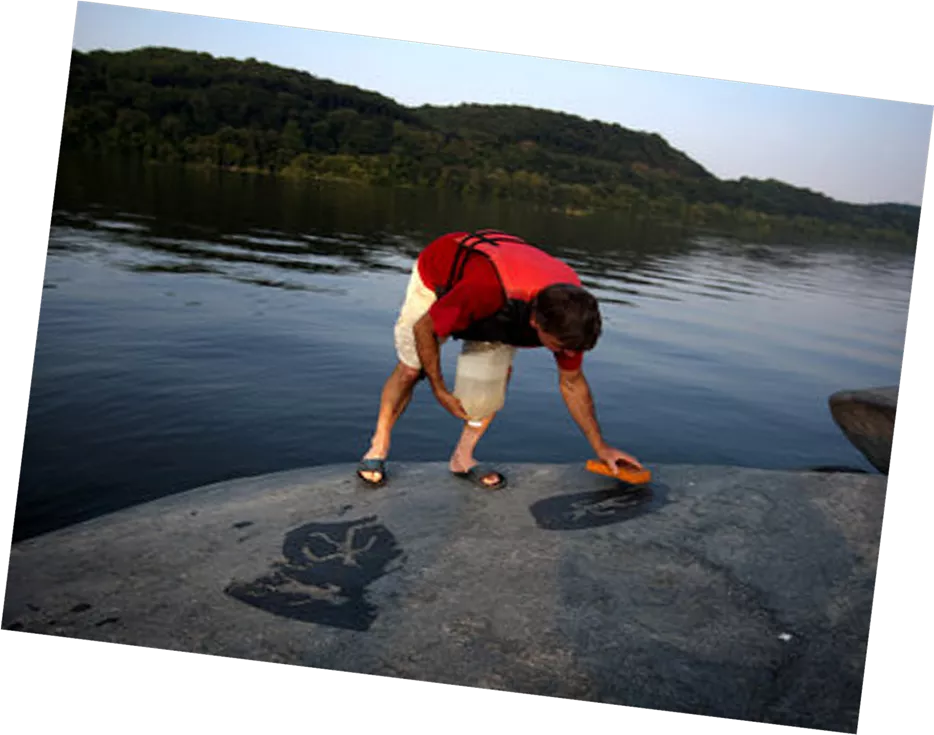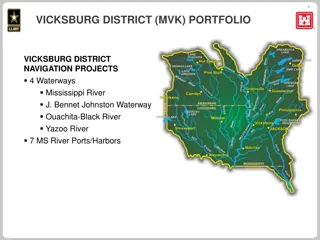Petroglyphs of Susquehanna River
The Susquehanna River in Pennsylvania is home to a rich concentration of petroglyphs, ancient rock carvings that serve as symbolic communication. These petroglyphs, found at various sites along the river, offer insights into tribal boundaries, cultural teachings, and sacred places. Despite challenges such as dam construction affecting their visibility, efforts are being made to preserve and display these valuable pieces of history, including the Safe Harbor Petroglyphs. Discover the stories etched in stone along the Susquehanna River and delve into the mysteries of these fascinating ancient artworks.
Download Presentation

Please find below an Image/Link to download the presentation.
The content on the website is provided AS IS for your information and personal use only. It may not be sold, licensed, or shared on other websites without obtaining consent from the author.If you encounter any issues during the download, it is possible that the publisher has removed the file from their server.
You are allowed to download the files provided on this website for personal or commercial use, subject to the condition that they are used lawfully. All files are the property of their respective owners.
The content on the website is provided AS IS for your information and personal use only. It may not be sold, licensed, or shared on other websites without obtaining consent from the author.
E N D
Presentation Transcript
Rock Art Picto = to paint Graph = to write Petro = rock Glyph = carved work
Symbols What do these symbols represent?
What was the purpose of petroglyphs? Petroglyphsare a form of symbolic communication. Archaeologists analyze rock art figures and patterns and have ideas, based on research, about the possible purposes of petroglyphs: Tribal boundary markers Teaching rocks to pass along the beliefs and values of the tribe to the children Markers of sacred places for meditation or to receive guidance from the spirits
Susquehanna River Petroglyphs The lower Susquehanna river has the highest concentration of petroglyphs in the NE, with more than 1000 separate carvings at only 10 sites. Many of the petroglyphs have been submerged or removed due to dam construction along the river.
Safe Harbor Site Big and Little Indian Rocks First recorded in 1863
Animal Glyph from Safe Harbor Site, on display at the Blue Rock Heritage Museum in Washington Boro, Lancaster, PA. The Safe Harbor petroglyphsare thought to have been carved 1,000 years ago. Archaeologists and historians are not sure which native people carved them, but the most commonly held belief is that the carvings were done by people of the Shenks Ferry culture.
Where can we see Safe Harbor petroglyphs? The mosaic tiles in the PA State Capitol depict seven different designs from the petroglyphs. You can also see some of the petroglyphs that were removed when the dam was built and were put on display at the PA State Museum. Look for them on your field trip! The petroglyphs on the rocks in the Susquehanna River are only accessible by boat and are best viewed at sunrise or sunset.






 undefined
undefined


























